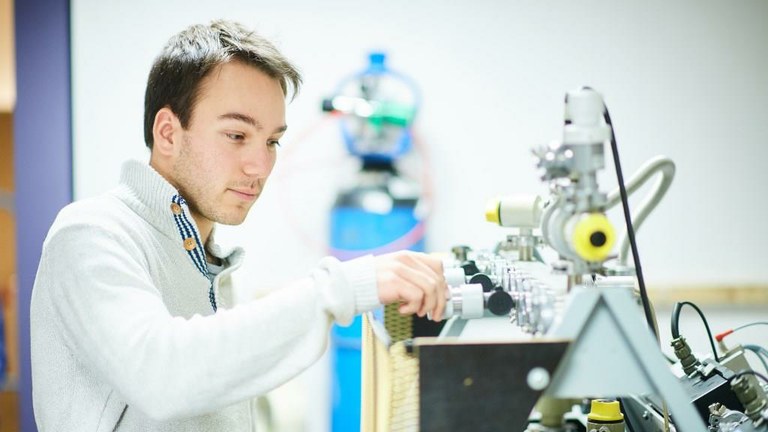
' M A T T E R , e n e r g y a n d e n v i r o n m e n t ' f o c u s
Our modern, everyday life has been transformed by an enormous number of discoveries made by physicists: semi-conductors, lasers, plasma and QLED screens, hard drives, etc. There is no shortage of challenges however: how to use renewable energy, energy storage, waste processing, etc. To meet these challenges, our society needs physicists with expertise in the properties of matter and its interaction with radiation.
Y O U R O B J E C T I V E S
- To understand all the complexities of natural phenomena.
- For example: How does electromagnetic radiation travel though complex environments and how does it interact with matter? How do the quantum properties of nanoscopic materials lead to technological revolutions (in electronics, photonics, etc.)?
- To create innovative physical models inspired by nature.
- For example: Biomimicry is a new approach which aims to draw inspiration from the complex organic structures of various animal and plant species. In optics, natural photonics is a new discipline derived from this approach.
- To have an influence on your environment and develop applications which will help to build a more sustainable world.
- For example: improving the performance of photovoltaic cells, developing hybrid materials for fuel cells, reducing atmospheric pollution, etc.
R E S E A R C H A N D T H E S I S
Research can be experimental (e.g. the study of material surfaces by scanning tunnelling microscopy, measuring optical properties, etc.), theoretical and digital (e.g. modelling of the physical properties of natural and artifical structures, quantum optics, etc.). These different approaches are indispensable and complementary.
For instance, a thesis could be based on the following subject: the interaction of electromagnetic waves, particularly microwaves, with graphene, a crystal the thickness of a single atom. The aim is to create a theoretical design for a shield to protect sensitive electrical circuits from interfering waves.










